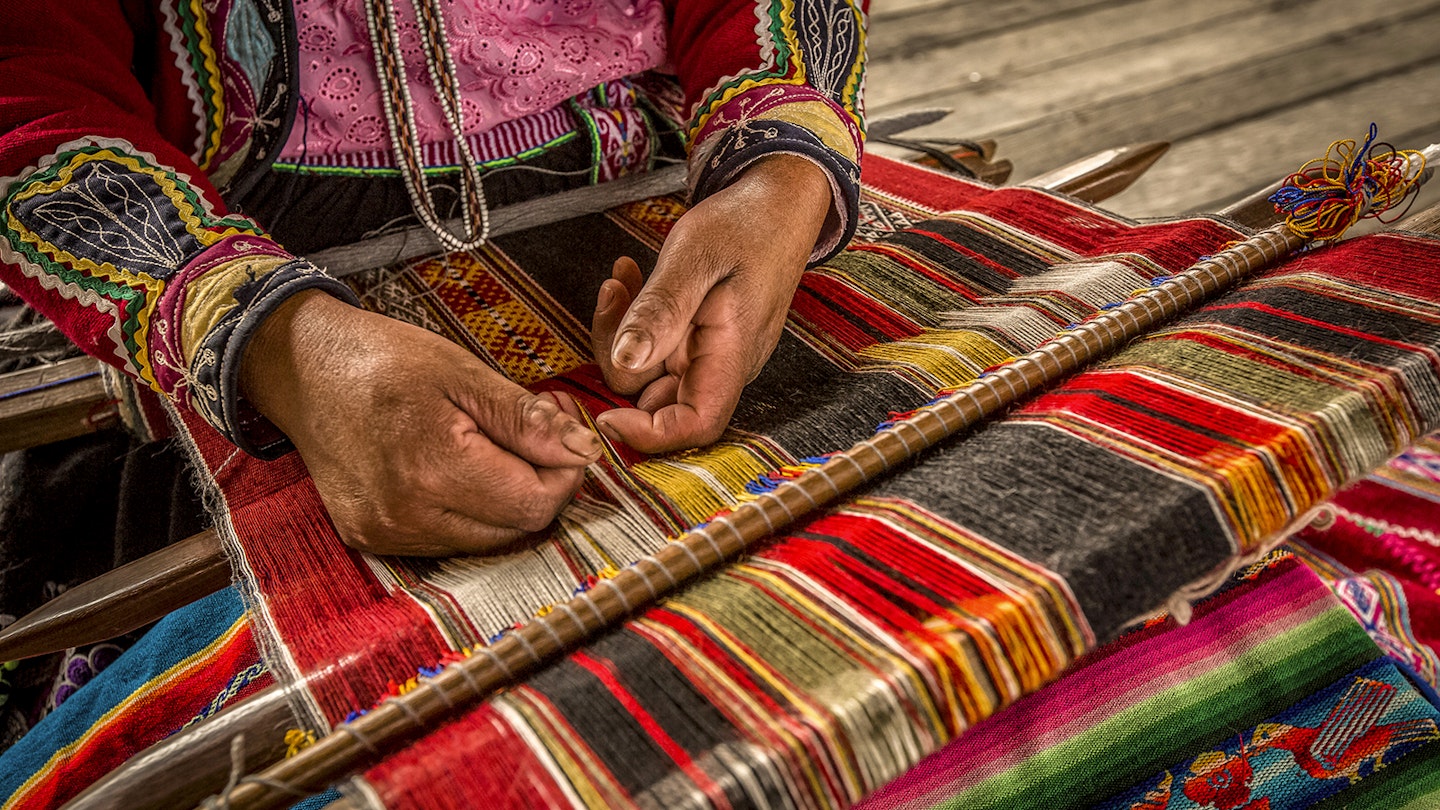If the hipster craft revival movement had a capital, it might look something like Arequipa, a southern Andean city anchored by knitters, bakers, and chocolate-bar makers. With a blossoming fair trade textile industry, gourmet food workshops, and even a hopping craft beer scene, Arequipa has become a beacon for maker-minded travelers.
Whether you’re a professional or hobby artisan, the city is your oyster when it comes to diving (hands-first) into craft traditions.

Sweet aromas and local pride flow through its cobblestone streets – after all, Arequipa was once Peru’s capital (and later attempted to declare independence). Today it remains intact as the country’s second-largest city and center of the alpaca textile industry; however, it still hasn’t shaken its autonomous spirit. Thanks to a blend of traditions from pre-Hispanic communities and Spanish settlers that founded the city in 1540, Arequipa’s culture is as distinctive as its position below three snow-covered volcanoes. It’s earned various nicknames over the years, including “The White City” for its colonial district (a UNESCO World Heritage site), with buildings made of white “sillar” volcanic stone. Consequently, a new moniker could be on the horizon: Peru’s craft capital.

Aspiring pâtissiers
Some of Peru’s most iconic desserts were born in Arequipa’s historic center. When the Convent of Santa Catalina was founded in 1579, the sisters became renowned for their confections, including the city’s most emblematic dessert: queso helado (cheese ice-cream). Despite the name, the frozen treat doesn’t contain cheese; instead, it is celebrated for its creamy consistency made of condensed milk, cinnamon, cloves, and vanilla. With 300 days of sunshine per year, almost any afternoon is ideal for snagging a scoop from Queso Helado Charito at Plaza de Yanahuara.
Modern pâtissiers have continued to build upon the city’s fragrant traditions, giving the expression “follow your nose” a literal meaning. Just ask Javier Chavez, owner of Chaqchao Organic Chocolates, whose childhood home in Arequipa neighbored a chocolate factory. A lawyer by profession, Chavez found his way back to the cacao bean in 2011 and eventually opened his own chocolate-focused café. He has since seen the artisanal scene flourish. “In the last two years, I have seen more and more entrepreneurs – from coffee roasters to bread-makers – launch different projects. We are well-known as a city that loves food,” he remarks. Travelers can learn how to make their own chocolate with Peruvian ingredients by participating in one of the daily bean-to-bar workshops at Chaqchao.

Knitwear enthusiasts
As the world’s largest alpaca fiber producer, Peru is a wonderland of wool and weavings. Once you’ve experienced chilly high-altitude mornings, you’ll likely rush to the nearest alpaca shop (such as Kuna, a reliable option) to buy a sweater. With the Arequipa region accounting for 99% of alpaca fiber sales, the city has become a popular destination for fashion designers on textile research trips. For New York-based knitwear designer Lindsay Degen, that involves watching wool be spun and hand-dyed in Arequipa and bonding with local knitters in the Andes. “Although there was a language barrier – they don’t speak Spanish, they speak Quechua – we laughed and knit together. Seeing their bright hand-dyed yarn and alpaca flock was also magical,” shares Degen.
Head to one of Arequipa’s alpaca mills, such as the Michell Alpaca Factory, to buy yarn direct from the source and get an overview of the evolving industry. While the camelid fiber has been valued since pre-Incan times, alternative supply chains like Art Atlas are increasingly embracing a fair trade approach by connecting international brands with local knitting groups who receive training and stable work from the initiatives.

Interior designers
Arequipa’s distinctive textiles, ornamental engravings, and age-old silver trade have spilled into the world of interior design. Today it’s one of Peru’s best cities to pick up antiques. From Inca archaeological artifacts to pre-Colombian ceramics, the city is a treasure trove for decorative arts. Unique home décor items can be sourced from the many antique shops located on Calle Santa Catalina. Head to Alvaro Valdivia Anticuario to peruse hundred-year-old pottery and brightly woven llama accessories that can be repurposed as wall-hangings. For smaller trinkets, pay a visit to Arte Colonial (Santa Catalina 312), which carries Inca carvings and retro gadgets. Craft fairs touting alpaca rugs and leather goods pop up on a weekly basis. Among them is Fundo el Fierro Artisans Market, open daily, next to the San Francisco Church a few blocks north of the main square, Plaza de Armas.
Experimental chefs
Arequipa is home to a food scene edgy enough to rival Lima’s. Step inside Zig Zag, a restaurant by Swiss-born chef Michel Hediger, and you’ll discover “Alpandina cuisine” (a fusion of tastes from the Alps and the Andes) as well as alpaca steaks sizzling on volcanic rocks. Equally popular is Gastón Acurio’s Chicha restaurant, which makes even the most polarizing dishes like cuy chactado (guinea pig) palatable to foreign taste buds. A visit to the city isn’t complete without swinging through Mercado San Camilo, the city’s main farmer’s market, where the atmosphere is as flavorful as the locally loved Chuquibamba cheese.

In Arequipa, eating, cooking, and even shopping is a social affair. The former is best experienced inside the city’s traditional picanterias. These family-run establishments specialize in spicy stews and regional dishes like chupe de camarones (prawn chowder) that have been cooked the same way for generations. Unique to Arequipa’s suburban areas, picanterias originated as spaces where various social classes could mingle over live music, poetry readings, and, of course, food. There are still a few left in Arequipa, and some, such as Victoria Picanteria Democratica, host cooking classes. Today, their importance is protected by Peru’s Ministry of Culture and the Picantera Society of Arequipa, where a group of about 40 (mostly) women meet to share their cooking secrets.





